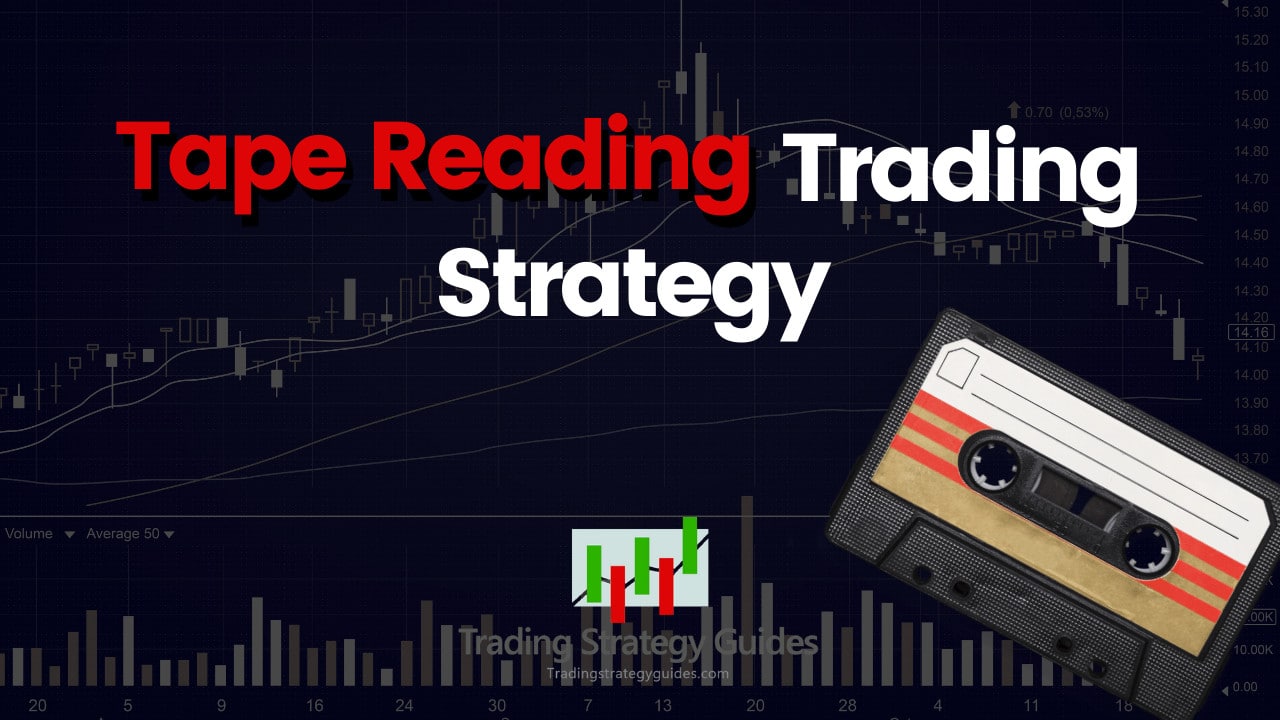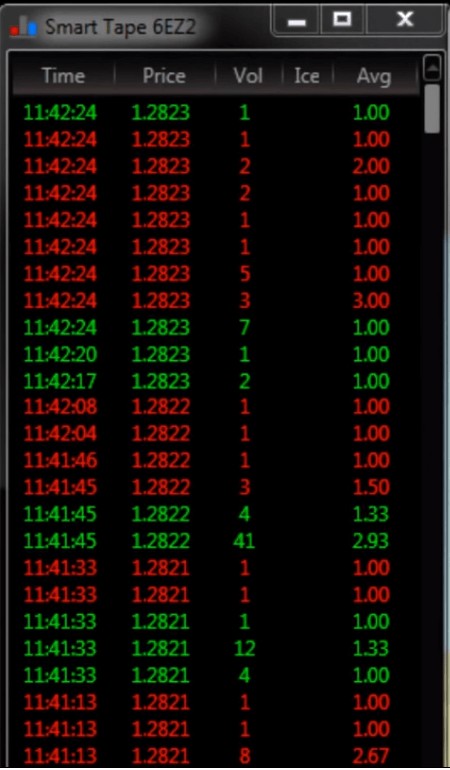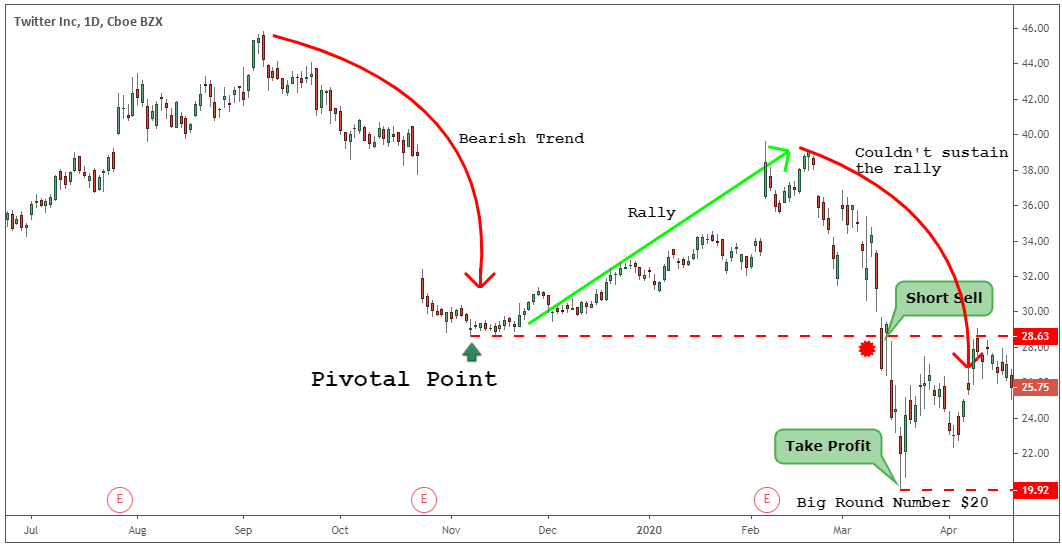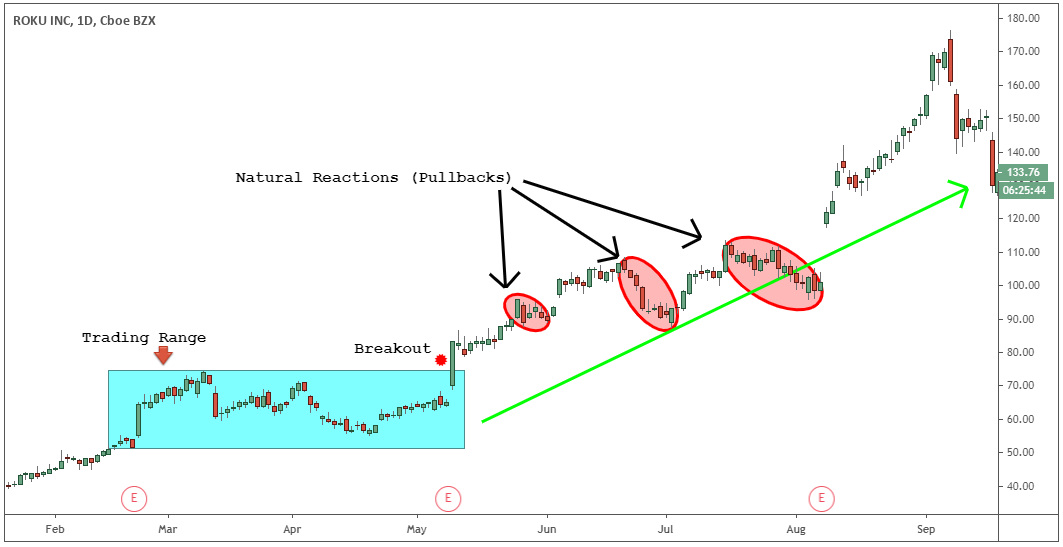Tape Reading Trading Strategy – 2023 Maximizing Profits

Learn the tape reading trading strategy used by Jesse Livermore, one of the world’s greatest stock traders. Tape reading is crucial for anyone who wants to fully understand the market. If you want to master the art of tape reading trading and use the same tactics that made Jesse Livermore more than $1 billion in today’s money read our guide. We’re going to reveal the wisdom behind stock market tape reading and more.
If this is your first time on our website, our team at Trading Strategy Guides welcomes you. Make sure you hit the subscribe button, so you get your Free Trading Strategy every week directly into your email box.
The story of how Jesse Livermore became one of the best traders on Wall Street is written in the best-selling book Reminiscences of a Stock Operator by Edwin Lefevre. In fact, Jesse Livermore was the trader who pioneered the best tape reading trading strategy.
More, in 1891 at the age of 14, Jesse Livermore started learning tape reading skills while he was working in a bucket shop (retail broker). He was so good at tape reading stocks and subsequently making millions in profits that these bucket shops started to kick him out.
Yes, you read that right, the retail broker hated Jesse Livermore for his ability to successfully read the tape.
If you’re scalping or day trading and even for trend following, you probably need to learn how to read tape trading. These market tactics can be used to fine-tune your entries and better time the market.
Let’s kick things off with a short introduction to what is tape reading, how to read tape trading, and then conclude by teaching you a very useful tape reading trading strategy.
What is Tape Reading?
Tape reading is also known as the “time and sales,” (or Level II) is the oldest trading strategy used to analyze the price and volume of stocks.
See the time and sales window below:
What you see in the above time and sales window are the trades that have been executed. Once a stock trade goes through the time and sales window will show us three things:
- The price at which a transaction went through.
- The trade volume or the size of the transaction.
- And the time of the trade.
Note* The order book is visible for stock, futures, commodities, indices, and everything that is on a stock exchange or futures exchange.
Tape reading allows you to see what is going on behind the price chart. Most traders spend their time studying how to read a price chart and see where the flow of the market is going. However, a chart is only able to show you those prices and trades that have already occurred. In that sense, we’re limited to the information we can get from trading technical analysis.
If you want to get to the roots of why the price is actually moving you need to look at stock market tape reading.
Now, let’s see how to read the tape in trading and highlight how useful it can be.
Optimizing Your Trading: Mastering the Art of Tape Reading?
Nowadays, due to the rise in technological development, modern tape reading also includes limited orders. These orders are non-executed trades that are resting on the order book. With this comes a deeper level of information on what’s really going on behind the price action strategy.
“Of course there is always a reason for fluctuations, but the tape does not concern itself with the why or wherefore. It doesn’t go into explanations. I didn’t ask the tape why when I was fourteen, and I don’t ask it today at forty…” Jesse Livermore in Reminiscences of a Stock Operator
For example, if you see a big buy resting order at a certain price it can suggest the price may find support and bottom out. Conversely, if you see a large sell order resting on the order book above the current price, it may suggest the price may find a resistance level and sell-off.
Get Our Free Swing Trading Report Today!
- Entry Points
- Exit Points
- Risk Managament
- Time Saving Tips
Here are a few tips on how to read the tape like a pro:
- Tape reading tip #1: use a size filter. Compared to Livermore’s times, nowadays the tape is moving too fast and it can be filled up with tiny orders. To avoid this we can filter the minimum and maximum orders to show up on the Level II data window.
- Tape reading tip #2: use day trading tape reading in conjunction with the price action. Professional traders only use the tape as a confirmation tool for entries and exits.
We’re going to outline a few reasons why tape reading day trading the market can give you an extra edge.
See below:
Purpose of Utilizing Tape Reading in Stock Market
Reading the tape can be extremely helpful if you are a day trader looking to catch short-term moves. Click To TweetWe can view tape reading as one of the most effective indicators for active day traders.
The second reason you would want to use tape reading is to make a quality risk-reward strategy.
Thirdly, tape reading indicator acts as a trend leading indicator as it shows the transactions of who is buying and who’s selling.
Last but not least, Level II is a window into what the smart money aka the big whales is doing. After all, what is ultimately driving the price is the smart money buying and selling interaction. Retail traders don’t have the buying power to alter the price in any way, shape, or form.
Now, we know that it’s a little bit harder to watch the time and sales window on the Forex market, which is an over-the-counter market. However, not all hope is lost, as you can use the Money Flow Index indicator to depict the interaction between smart money buying and selling on various currency pairs.
We’re going to get right to the heart of the powerful tape reading strategy used by the trading legend Jesse Livermore.
See below:
Using Tape Reading to Enhance Your Trading Strategy
Now, before we reveal the rules of the tape reading trading strategy, we need to lay down the foundation of reading the tape day trading. For this purpose, we are going to steal Mike Bellafiore’s Playbook game.
Mike Bellafiore is the cofounder of SMB Capital, a New York-based proprietary trading firm. Tape reading day trading is a big part of his decision-making process.
According to Mike Bellafiore, this is how to think about reading the tape:
Tape reading traders need to look for certain clues on the buy and sell-side orders. For example, if you want to buy stocks, some of these things need to go through the tape:
- Bids stepping up.
- Most trades happen on the ASK price (traders buying from the sellers).
- Big orders showing on the ASK price.
- Buyers holding the BID.
- Thin on the ASK/Offer (showing supply and demand imbalances).
- ASK to spoof (when a trader puts a large order to sell at a certain price and when it gets close to that price it’s pulled out not hitting the market. It’s a tactic to scare people from buying).
- Lack of downticks.
- Time and Sales accelerating, but the price holds firm.
Note* you can use the same playbook in reverse for selling stocks. Check out our guide on the risk-reward ratio formula.
Now, please note that we’re using the tape only after we have spotted a tradable setup. We want to make sure we have a good risk to reward trading opportunities before we read the tape. Click To Tweet
Moving on…
Let’s examine how tape reading contributed to Jesse Livermore’s success story. Jesse Livermore’s methods of trading in stocks relied heavily on reading the tape.
However, tape reading was only a part of his overall best trading strategy.
Now you might ask yourself:
“What trading strategy did Jesse Livermore use?”
Livermore only liked trading stocks that are moving in obvious directions. So, in this regard, Livermore was more of a trend follower or swing trader.
So, in order to identify and ride these trends, Livermore used a pivotal point system.
“Whenever I have had the patience to wait for the market to arrive at what I call a Pivotal Point before I started to trade; I have always made money in my operations.” Trading quote from Jesse Livermore
In essence, a pivotal point in Livermore’s strategy was a swing high/low price from where the market rallied or sold off in a strong fashion way.
See tape reading trading strategy chart:
Now, in the old days of Jesse Livermore, there weren’t day trading stock charts.
This legendary stock trader watched the ticker tape and recorded the stock prices by hand. So, whenever a stock from his Watchlist got near a Pivotal Point he was quick to jump on board.
Luckily for us, we can use the stock charts to pinpoint these pivotal points.
Now, here is the process behind Livermore’s tape reading trading strategy:
Let’s assume the stock price has been trading downwards before rallying and leaving behind a swing low (pivotal point). If this stock price rally can’t be sustained and the stock retreats back to the pivotal point, Jesse Livermore will then use his tape reading skills to execute a trade in that region.
Get Our Free Swing Trading Report Today!
- Entry Points
- Exit Points
- Risk Managament
- Time Saving Tips
See the stock chart below:
Any notable bullish or bearish trading strategy movement from the pivotal point would constitute a trading opportunity.
Here are Livermore’s stock market tape reading rules:
- Use the tape for a clue of who is in control of the market.
- If the market breaks below the pivotal point by $1 (or $3) go short.
- If the market holds above the pivotal point and rallied by $3, Livermore would have bought the stock.
Another tape reading strategy used by Jesse Livermore was to trade stocks that have broken out from a range trading pattern. Livermore wasn’t an advocate of stock breakout strategy, but he looked for signs that the stock will start developing a new trend in the direction of the breakout.
Some of the tape reading rules used by Jesse Livermore are listed below:
- The breakout should be accompanied by a larger than average volume of trading shares.
- The stock price should continue in the direction of the breakout for several days.
- As the new stock trend matures, you should observe natural reactions (buying pullbacks) that are accompanied by a decrease in trading shares.
- The pullback should last on average 3 days and 3 weeks, after which you should observe an increase in trading shares and price resuming in the direction of the trend.
See the stock chart below:
Final Words – Tape Reading
In summary, if you want to improve your tape reading skills spend as much time possible studying the tape and how the stock price reacts to different scenarios. Don’t get frustrated if it will take you some time to develop the skills to read the tape effectively.
We use stock market tape reading as a confirmation currency trading tool and not as a standalone trading strategy. If you’re a day trader or a scalper, tape reading can provide an extra edge over the trader next to you.
Here is a short recap of Livermore’s tape reading trading strategy:
- Only trade stocks that are near a significant pivotal point.
- Use the tape reading skills to gauge when big orders are entering the market.
- Only trade in the direction of the prevalent trend.
- Have patience and don’t chase the market.
Feel free to leave any comments below, we do read them all and will respond.
Also, please give this strategy a 5 star if you enjoyed it!
[ratings]
Thank you for reading!
Frequently Asked Questions
- What is tape reading in trading?
- Tape reading is a trading strategy that involves interpreting the flow of market data, such as volume and price, as it appears on a trading tape or electronic order book. The goal of tape reading is to gain insight into market sentiment and make profitable trades based on this information.
- How do tape readers use market data to make trading decisions?
- Tape readers use market data such as volume, bid-ask spreads, and price movement to interpret the sentiment of the market. This information is used to make informed trading decisions, such as entering or exiting trades, based on the perceived market sentiment.
- What are some tools used by tape reading?
- Tape readers may use various tools such as Level II quotes, tick charts, and time and sales data to interpret market data and make trading decisions.
- Is tape reading still used today?
- While tape reading was more prevalent in the past when trading was conducted on physical trading floors, it is still used by some traders today, especially in electronic trading.
- Can tape reading be used for short-term trading?
- Yes, tape reading can be used for short-term trading, as traders use it to gain insight into immediate market sentiment and make quick trading decisions.
- How does tape reading differ from other trading strategies?
- Tape reading differs from other trading strategies in that it focuses on interpreting the flow of market data in real time, rather than relying solely on technical analysis or fundamental analysis.
- What are the risks associated with tape reading?
- Tape reading is a high-risk trading strategy, as it requires quick decision-making and interpretation of market data. Additionally, the interpretation of market data may be subject to biases and errors, which can lead to losses.
- How can traders learn tape reading?
- A: Traders can learn tape reading by studying trading books and courses, practicing on a simulator or demo account, and seeking mentorship or guidance from experienced tape readers.
- Can tape reading be used in conjunction with other trading strategies?
- Yes, tape reading can be used in conjunction with other trading strategies such as technical analysis and fundamental analysis. Combining tape reading with other strategies can provide traders with a more comprehensive view of the market and increase the accuracy of their trading decisions.
10. What are some characteristics of successful tape readers?
- Successful tape readers have a deep understanding of market data and the ability to interpret it quickly and accurately. They also have strong risk management skills and the discipline to stick to their trading plan.
Also check out Tim Blacks training on the Tape Reading Strategy Video!















Very interesting
Thanks! Glad you enjoyed it!
Great read, I have been studying the market for a few weeks now and in doing so I kept thinking to myself their has to be a way no one is telling us until now of course, of a way to determine the tread before not in the past. just seemed like common sense to me. I do hope this works for me as I’ve tried so many things and suggestions yet have had more losses than wins and the the paper trading is nice but it doesn’t really replicate actual orders and types. Thank you for the informative post.
Thank you
I like this weblog so much, saved to favorites.
too many hidden orders. MM playing tricks!!! Last second pulled orders.. i just simply don’t trust it!!!